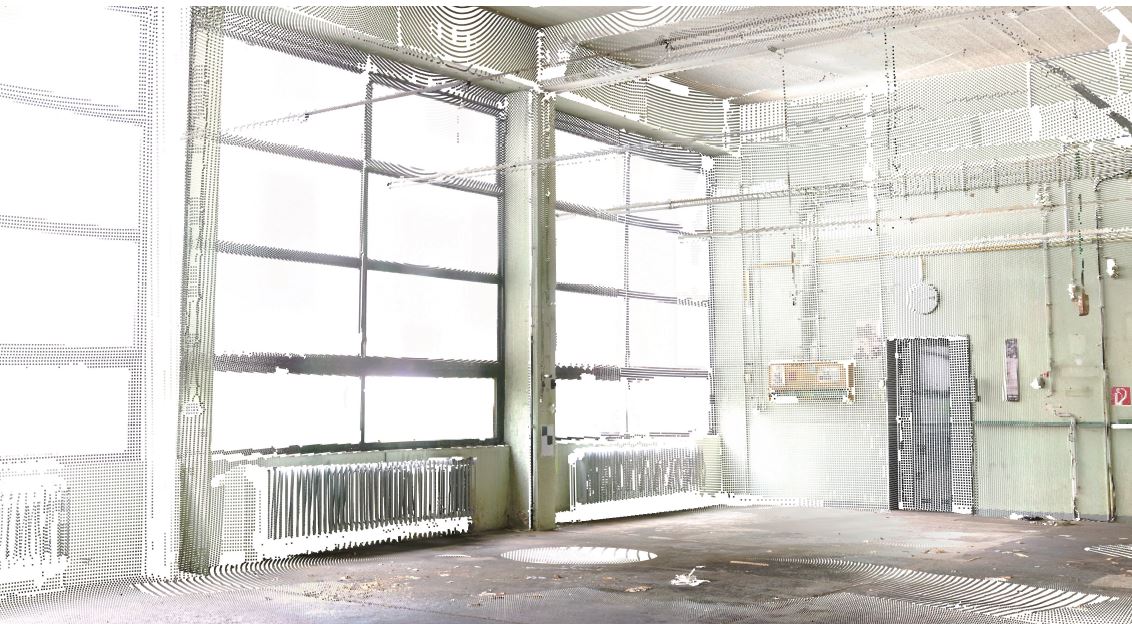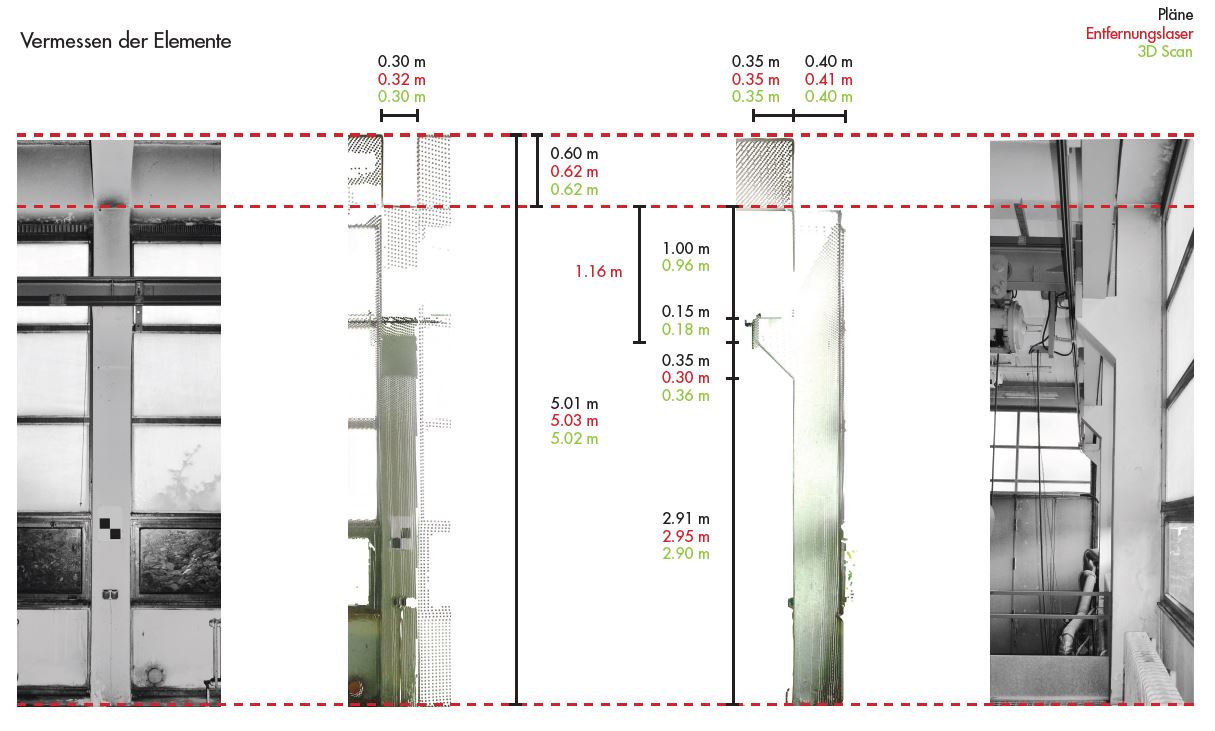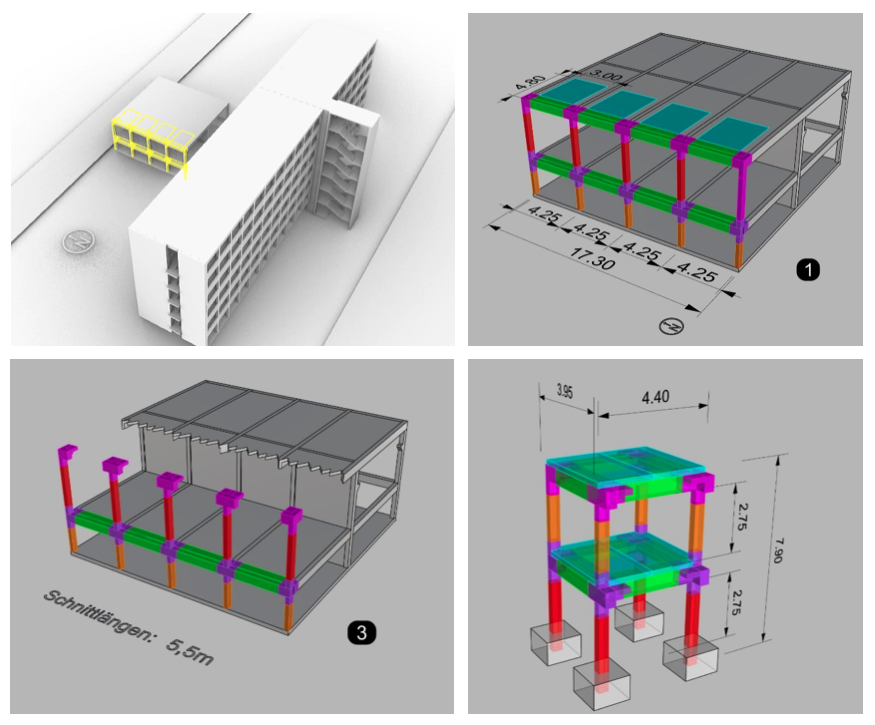In the Precast Concrete Components 2.0 project (PCC 2.0), new real-digital process chains are being developed to extract concrete components from existing buildings that are to be demolished, which can then be refurbished and reused as "precast concrete components" for new buildings (Fig. 1). While digital-real process chains of new buildings usually start with digital planning before they are realized on the construction site, a real-digital process chain starts with an existing building. The basis of this novel real-digital process is a digitization platform for acquisition, planning, management, logistics and manufacturing, which is being developed as a prototype. The real-digital process chain is then implemented in the construction of a life-size demonstrator in the form of a building section made up of refurbished PCC 2.0 elements.
The concept can make a contribution to a more sustainable, resource-efficient circular economy in the construction industry, while at the same time counteracting the increase in construction costs predicted among others by the German Construction Industry Federation due to a shortage of raw building materials.
03/2021 - 02/2023
BMBF – Federal Ministry of Education and Research
The aim of the project is to developed a directly applicable, real-digital process chain which is realized by an intelligent linking of existing digital recording, planning, production and data management technologies.
The first step of this novel process chain is to 3D scan real building structures and to systematically record and digitize their reusable concrete components. These components are then clearly identified by RFID technology and archived as a digital “twin” in a Building Information Model (BIM). In order to ensure a most flexible reuse of the deconstructed concrete components, the individual elements must be uniformed through subtractive post-processing. The resulting PCC 2.0 elements can either retain their original function or be modified by combining them with high-performance materials prior being reassembled to new precast structures.
An accompanying life cycle analysis will allow an assessment of the method’s ecological and economic impact.
There has been extensive preliminary research carried out by the ITE in the field of novel, high-performance and resource-efficient construction methods. As part of the DFG Priority Program 1542 "Concrete Light", precise dry joint systems for thin-walled elements made of Ultra-High Performance Fiber Reinforced Concrete (UHPFRC) and precise new types of joints (toothed joints, inlays, etc.) for geometrically complex surface and bar elements made of UHPFRC were developed and used in the realization of the UNI-CON² demonstrator (Fig 3). In addition, the production of profiled dry joints by subtractive processes (cutting, grinding, smoothing) was also investigated. In numerical and experimental investigations, dry joints were developed that exhibit remarkable load-bearing capacities of up to 85% of comparable monolithic structures.
Other published preliminary investigations addressed the development of an algorithmic calculation method that assigns the optimal arrangement to the reversible load-bearing connections within an overall structure, in terms of multiple load combinations and properties of the various precast connections.
In five work packages various experimental and theoretical methods are applied:
WP 1 focuses on the holistic digitization of the existing buildings, creation of BIM models and development of the 3D data platform (Fig 4). Potential concrete components will be identified and marked with RFID tags.
In WP 2 the deconstructed components undergo detailed digitization and will be processed into PCC 2.0 components. The digital component models are provided with attributes on design, joining details and digital post-processing.
WP 3 aims to develop component combination strategies as well as reversible dry joint technologies for the building assembly.
WP 4 covers the digital component fabrication of PCC 2.0 parts. High precision subtractive finishing processes will be developed and applied in the Digital Building Fabrication Laboratory (DBFL).
In WP 5 a demonstration building (Fig 5) will be assembled from the previously processed PCC 2.0 allowing for an in-depth evaluation and documentation of the real-digital process chain.


